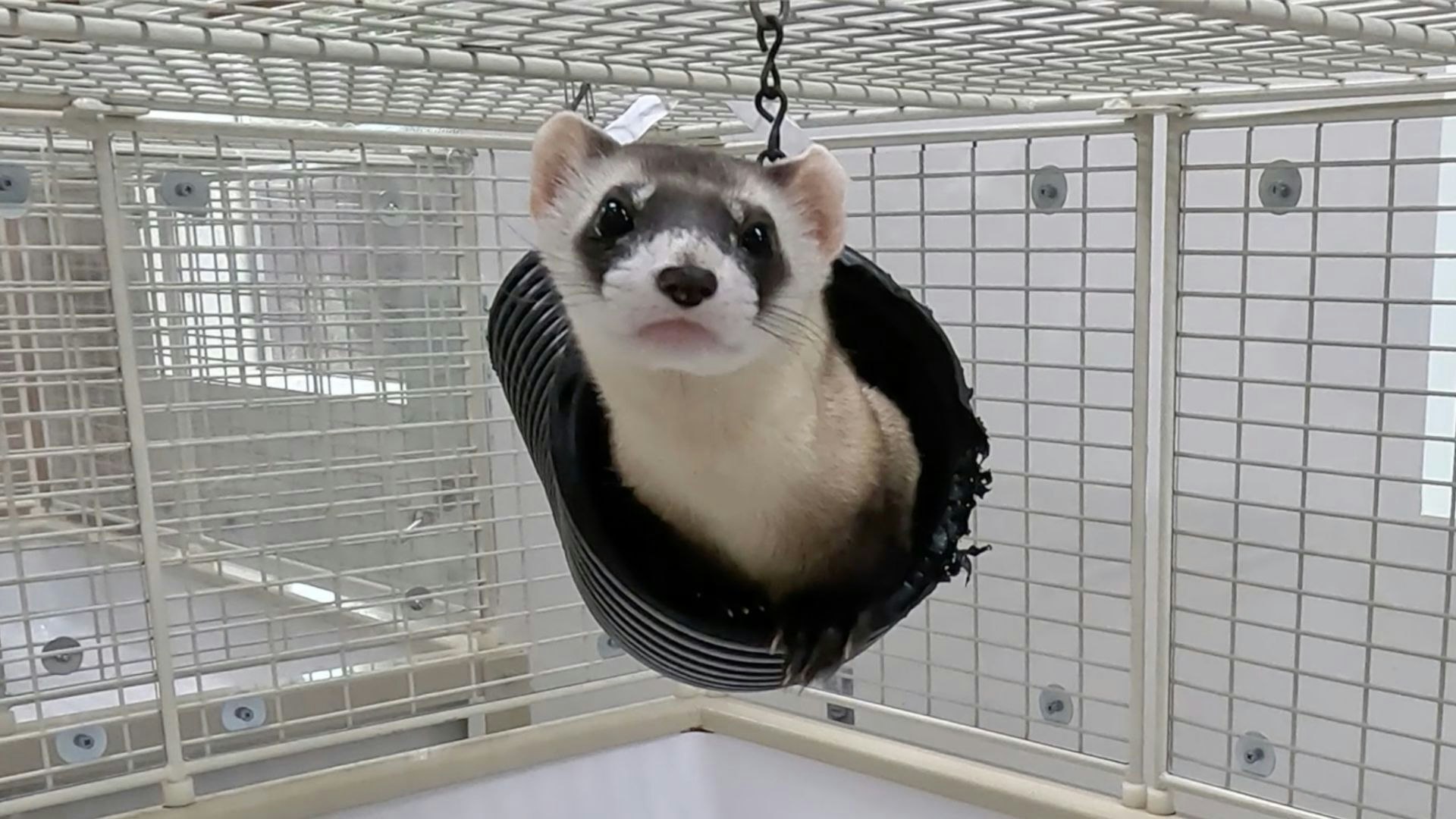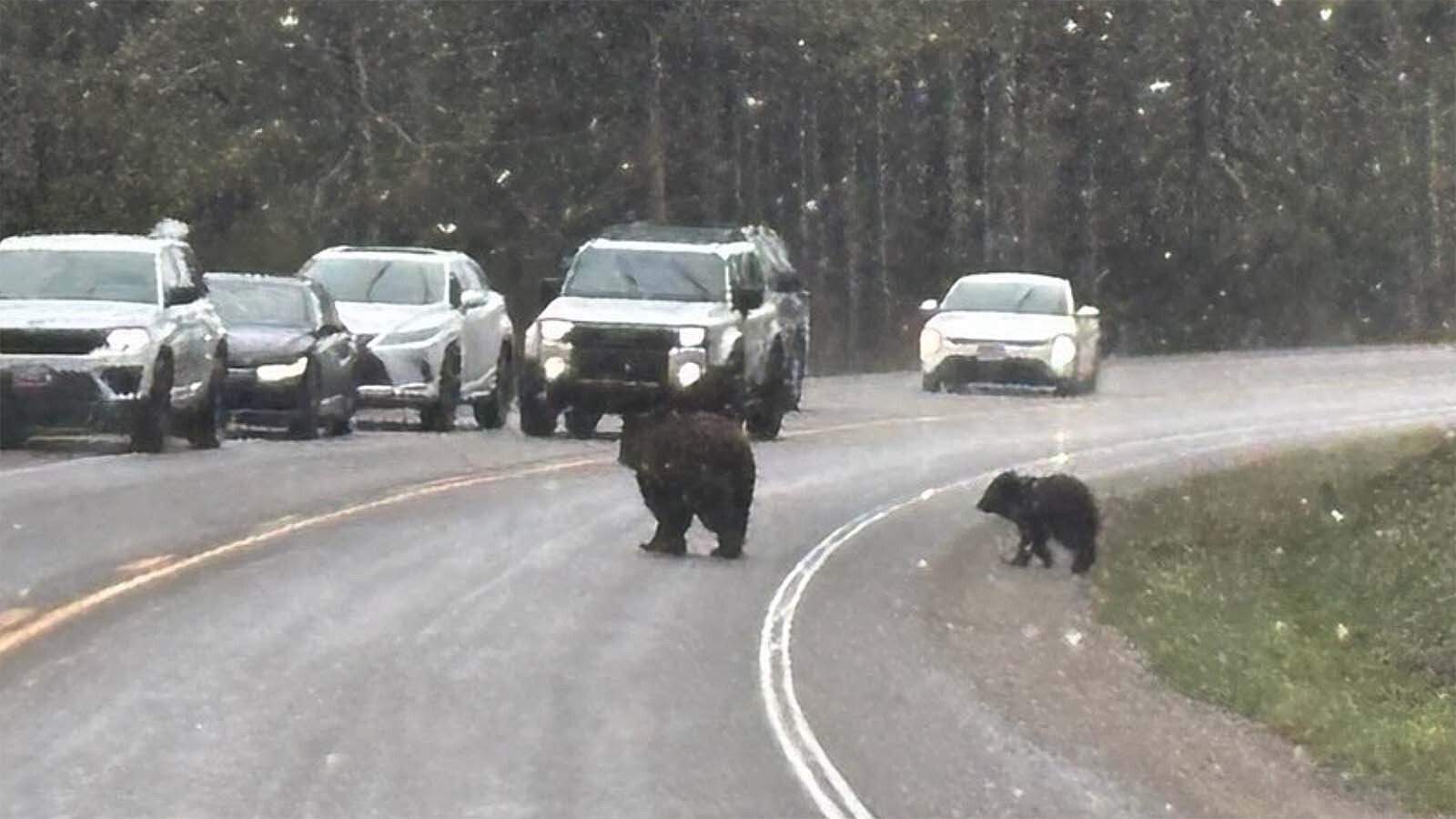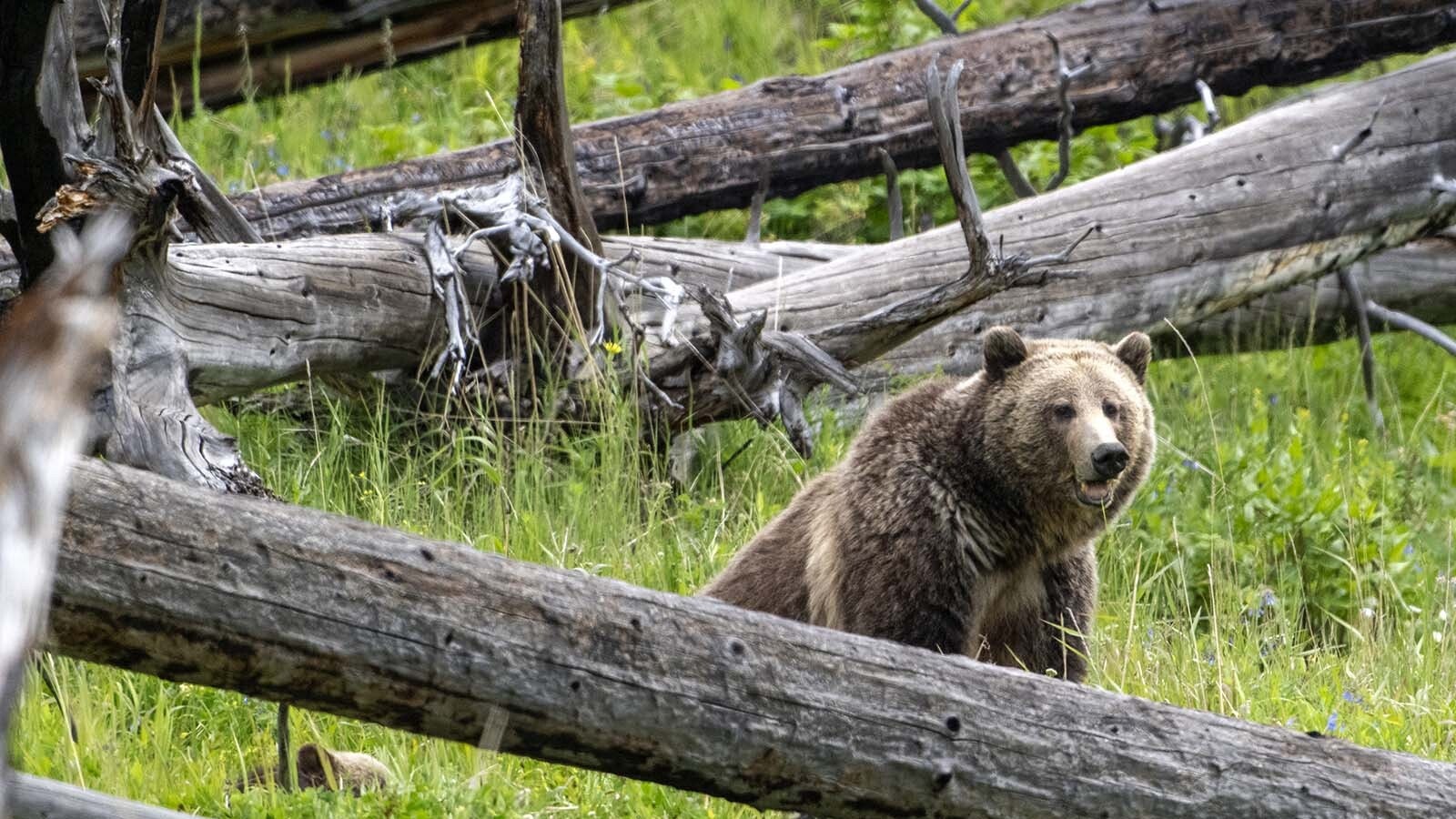Like Noah and his Ark, all black-footed ferrets living today can be traced back to 18 animals discovered near Meeteetse in the 1980s.
Now the descendents of those original animals – the last of their kind known to exist at the time – are carefully watched over by a team of scientists and technicians at six breeding facilities across the United States, making sure that the fragile species has a fighting chance.
One of those facilities is in Phoenix, Arizona, at the Phoenix Zoo. Dr. Tara Harris, director of Conservation and Science zoo, told Cowboy State Daily that since the zoo began working with the species in 1992, more than 500 kits have been born at the Phoenix facility.
“Every year, we’re working to try to breed black-footed ferrets to produce kits that will either be released back to the wild or remain in the breeding program to produce additional offspring for release,” said Harris.
Top Guns
Harris, who received her Ph.D. from Yale with a focus on primatology, has found her niche with conservation science.
“I’m passionate about native species recovery,” she said, which is what attracted her to the Phoenix Zoo, where she oversees 10 native species, from the Chiricahua leopard frog to the cactus ferruginous pygmy-owl.
The zoo’s work with black-footed ferrets has seen great success. Just this year, out of the 21 kits born across five litters at the Phoenix Zoo, six were released back into the animals’ native habitat. Three of them went to the Cheyenne River Sioux Tribe in South Dakota and the others made it back home to Meeteetse.
And those three have very catchy names, bestowed on them by the Arizona Game and Fish pilots who flew them to their new homes.
“The three that belonged to our ‘Top Gun’-themed litter – Maverick and Goose and Charlie – got reintroduced to Meeteetse,” Harris said.
Matchmaker, Matchmaker
The Black-Footed Ferret Species Survival Plan, which is coordinated by the Association of Zoos and Aquariums in partnership with the Fish and Wildlife Service, provides the zoo with information about which pairs would be the best genetic matches.
And when breeding season comes around, which starts near the end of this month and gets into full swing in spring, the staff at the Phoenix Zoo become matchmakers.
“We look at which males and females are ready, and which would be the best from a genetic standpoint, and make a decision about which ones to pair,” said Harris.
And while it’s not moonlight and roses, the technicians – when the time is right – allow the ferrets to let nature take its course.
“We monitor them for reproductive readiness,” she said. “And then we put the males and females together.”


COVID-19
The population of the endangered species isn’t yet strong enough to thrive, as predators and disease could easily wipe out entire colonies of ferrets, whose main source of food are prairie dogs.
In fact, at the Phoenix Zoo, the black-footed ferret breeding facility – which has space for up to 30 adult black-footed ferrets and their kits, but now holds 15 females and 12 males – is under tight environmental control.
“We have five conservation technicians and our conservation and science manager that really care for our black-footed ferrets and get them ready for the breeding season,“ she said.
And those technicians are the only humans allowed to interact with the ferrets. Minimizing human contact, Harris said, reduces risk to the species.
“They can pick up many of the same diseases that you or I can carry, they could get the flu from us – and they could also get COVID-19 from us,” said Harris.
And when the pandemic began, staff at the Phoenix Zoo put many restrictions in place to keep the ferrets safe.
“We wear KN-95 masks going in,” said Harris. “We always change into scrubs and different shoes, and we wear gloves.”
Survival Of The Fittest
Harris said the ferrets chosen for reintroduction into the wild are transferred from any of the six breeding facilities to the National Black-Footed Ferret Conservation Center in Carr, Colorado.
“They have to show that they can make it outside for at least a month,” she said. “They have to be able to kill live prey there, to show that they can be hopefully successful upon release.”
The hardiest of the animals are then taken to one of more than 30 reintroduction sites across North America, including the species’ home turf near Meeteetse.
“It’s very exciting that some of ours got to go back to Meeteetse, where this species was rediscovered,” said Harris.
The Meeteetse Connection
Her work with the black-footed ferret brought Harris to Wyoming in 2019 to see for herself where the story began. That’s the year the annual meeting for the agencies involved in the Black-Footed Ferret Species Survival Plan was held in Meeteetse.
“We got to meet the Hogg family that was integral to the rediscovery of black-footed ferrets,” she said. “And we got to go next door to the Pitchfork Ranch where the rest of the ferrets were discovered.
She said meeting the people who were there on the ground at the time, and the families that experienced it, was a wonderful experience.
“I get to now bring those stories back to the Phoenix Zoo and be able to share them with our guests and other people who might see us online and care about what we’re doing here for the black-footed ferret,” said Harris.
Harris said none of these creatures would be here were it not for Wyoming Game and Fish biologists and the people of Meeteetse who helped to bring the species back from the brink.





